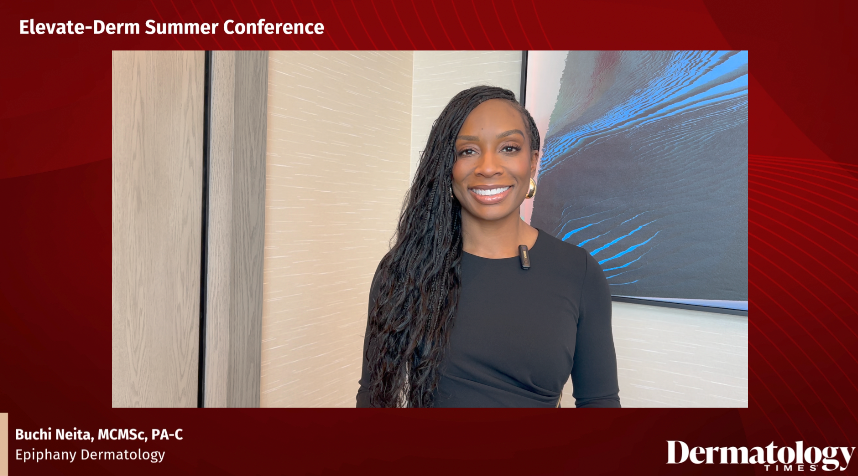“It is predicted that by 2044, 50% of the US population will belong to a minority group. So, it’s imperative that all of us learn how to correctly diagnose and treat patients of color, and a lot of that starts with that patient relationship,” said Buchi Neita, MCMSc, PA-C, in an interview at the 2025 Elevate-Derm Summer Conference in Park City, Utah.
Neita, a board-certified physician assistant at Epiphany Dermatology in Peachtree City, Georgia, presented 2 sessions focused on clinical and interpersonal strategies for improving dermatologic care in patients with skin of color.1,2
Neita’s clinical session centered on recognizing common and overlooked conditions in patients with skin of color. She began by reviewing benign variants such as longitudinal melanonychia, pigmentary demarcation lines, and volar hyperpigmentation, emphasizing that familiarity with these findings is essential to avoid misdiagnosis. She also discussed highly prevalent conditions, including post-inflammatory hyperpigmentation, pseudo folliculitis barbae, and acne keloidalis nuchae. Notably, she shared evidence that 1% over-the-counter diclofenac gel, used twice daily for 3 months, can be effective for acne keloidalis.
For keloids, she stressed the need for aggressive treatment with high-concentration intralesional triamcinolone at 4- to 6-week intervals. Regarding scarring alopecias, particularly central centrifugal cicatricial alopecia, Neita urged clinicians to biopsy or initiate treatment early in patients reporting central scalp tenderness, burning, or breakage. She also cautioned against overdiagnosing traction alopecia, discussing the importance of differentiating it from androgenetic and frontal fibrosing alopecia.
Neita also reviewed skin cancer presentations in darker skin tones, noting that basal cell carcinoma is typically pigmented and that squamous cell carcinoma is the most common skin cancer in Black patients, often arising in non-sun-exposed or previously scarred areas. She emphasized vigilance for acral lentiginous melanoma, particularly when nail pigmentation progresses over time.
In her session on building patient rapport, Neita acknowledged the historical mistrust many patients with skin of color carry, referencing the Tuskegee experiment3 and systemic underdiagnosis. She shared actionable strategies: connect on common ground, actively listen, sit eye-level during exams, use language interpreters if needed, learn patients’ names, and document pronunciation. She emphasized performing meticulous skin exams using enhanced lighting and dermoscopy to identify subtler signs of inflammation, such as violaceous or hyperpigmented cues.
Neita’s final message to colleagues was that clinicians must prioritize continued education through conferences, podcasts, and literature dedicated to skin of color patient care.
References
- Neita B. Dermatologic conditions in skin of color. Presented at: 2025 Elevate-Derm Summer Conference; July 24-27, 2025; Park City, UT.
- Neita B. The art of connection: building meaningful rapport with skin of color patients. Presented at: 2025 Elevate-Derm Summer Conference; July 24-27, 2025; Park City, UT.
- About the untreated syphilis study at Tuskegee. US Centers for Disease Control and Prevention. Updated September 4, 2024. Accessed July 28, 2025. https://www.cdc.gov/tuskegee/about/index.html
